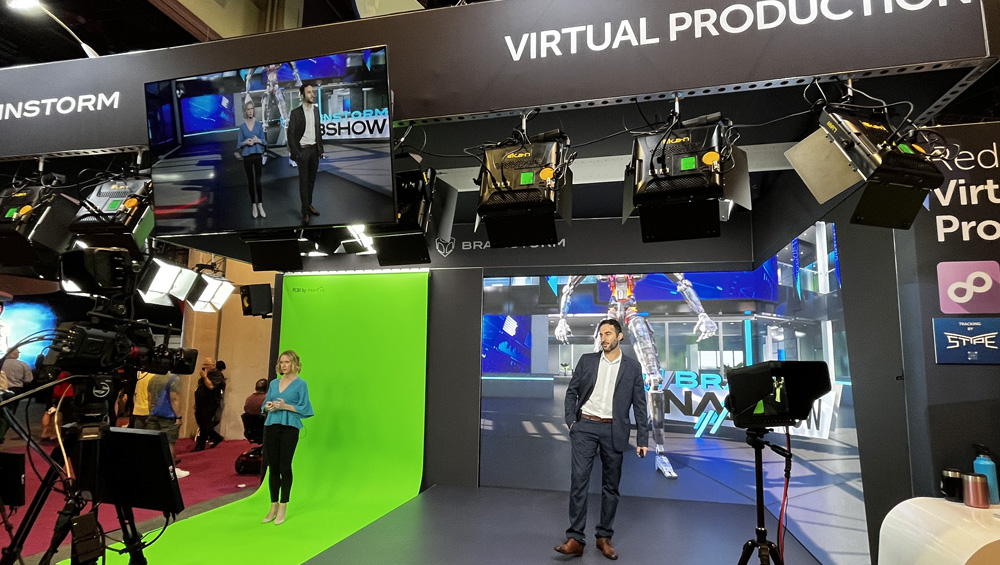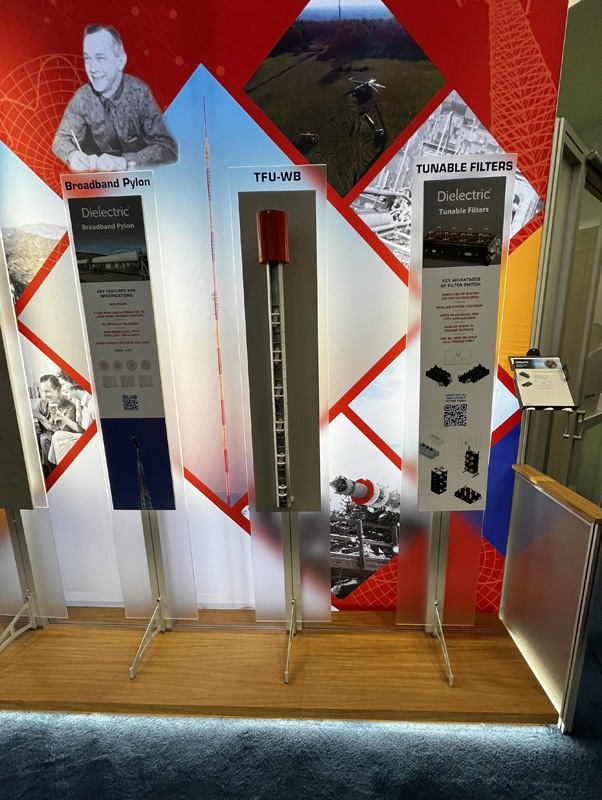
AI Buzz Loudens, FAST Talk Quickens At NAB 2023

LAS VEGAS – Artificial intelligence (AI), the cloud, virtual production, FAST channels and ATSC 3.0 dominated product offerings and conversations at NAB Show.
As ever, the products and the technologies that power them aim to improve efficiency, but this year vendors touted how their products could help broadcast operations improve sustainability.
AI can help with tasks like monitoring content for suitability in other regions, tagging content with metadata and so much more.
Brian Hopman, AP ENPS’s VP and GM for workflow solutions, said he’d had so many discussions around AI and ChatGPT that it was like a bingo card of mentions. While there is tremendous interest, he said, “we feel a special responsibility to not just rush that into a whiz-bang demo at show so that people can check us off their bingo card.”
AP is also part of Amazon’s Virtual Live Remote Production effort aimed at supporting the industry’s transition from cloud-hosted to cloud-optimized.
“They’ve provided our development teams with tremendous assistance, reimagining how the back end of our systems work,” he said. It “strikes a great balance between nice, shiny things of the cloud with reliance, robustness and reliability that customers of ours expect.”

Dielectric’s ATSC 3.0-ready products include this new TFU-WB single frequency network antenna.
Simon Eldridge, SDVI chief product officer, said cloud usage over on-prem systems can help companies improve their sustainability. Part of that comes down to the fact that the cloud allows users to buy what they need as they need it, as opposed to having to invest in on-prem equipment that may exceed average needs in order to accommodate peak usage.
With the cloud, he said, it’s possible to track how many grams of carbon a piece of content is responsible for.
“AWS will give you a carbon footprint” for your account, he said. “Our 2022 footprint is lower, even though we’re using significantly more resources than in 2020.”
SDVI is offsetting its carbon using a UN-backed carbon offsetting program.
TVU Networks CEO Paul Shen said one of the ways to drive cloud efficiency and lower costs is by moving the microservices rather than the content.
“For a while, everybody was saying everything was going to the cloud,” Shen said. “We are way beyond that.”
Enter the omni-cloud. “Content is heavy,” he said. “We move the processing to where the content is.”
That speeds up operations because it eliminates the need to encode, transmit and decode content.
“That whole time period is collapsed to zero. That’s the kind of efficiency we’re talking about. It’s a fundamental change,” Shen said.
Shawn Maynard, SVP and general manager at Florical, said cloud playout is getting attention. It’s a quicker-to-market channel approach that appeals to customers, but there are some hurdles.
“The cloud is still the wild, wild west,” he said. “Think of it like a box of Lego asking you to build your own toys. Some people architect very well but not everybody is a master Lego builder, and [they are] somewhat generic blocks. The problem with generic blocks is the broadcast industry has specific designs and there are pieces that need to be custom-made. And if all are custom, that breaks the model of what’s important, and that’s standardization and interoperability.”
Florical is a founding member of Open Services Alliance, which merged with SMPTE to promote a common language platform
“We’re very early in the journey” of mapping out requirements and specifications, Maynard said.
Miguel Churruca, marketing communications director at Brainstorm, called virtual production the buzzword of the year. It is cost-effective and helps create an immersive environment for storytelling, he said.
A green screen can be used to “bring people over” from remote locations into the studio.
“That is impressive for the audience. There is real interaction,” he said. Additionally, he said, green screens can help with the carbon footprint while saving the money and time associated with travel, he said.
Green screens combine well with LED walls, he added. “People think they are incompatible environments, and they’re not. We feel there is a need for talent to be in an immersive environment.”
Mack McLaughlin, CEO-creative director at FX Design Group, said that despite all that virtual has going for it, there remains the question of whether it’s ready for prime time. Virtual looks good, but for broadcasters to choose virtual, he said, it needs to slide into their workflows.
“Virtual will never save you a dime, but it can be a revenue resource if you have it and know how to use it,” by renting set time out, he said.
Virtual reality (VR) imaging is improving, according to Media.Monks. The company is using a Canon R5 C body, a Canon monolens and a Canon stereoscopic lens to create fully immersive VR content of sporting and live events that can be viewed with a VR headset.
“We’re reaching a point where you won’t be able to tell between real life and this (headset),” Hon-Ming Gianotti, director of innovation at Media.Monks, said.
Mediaproxy CTO John O’Halloran said FAST channels were getting a lot of attention.
“To me, this is the first time that we are really facing the collision of linear broadcast with video on demand,” he said. “Now linear is spilling out into the internet. It’s almost an escape hatch for linear broadcasters.”
At the same time, ATSC 3.0 is widely discussed, but uptake is slow, he said. “We’re still seeing low take up and adoption. We’re standing by for it. No one’s in a hurry to retool all the transmitters. It’s something of a blocker.”
Dielectric President Keith Pelletier said the company has a complete product portfolio ready for 3.0, including a new TFU-WB single frequency network antenna.
Mark Goins, Gates Air VP, said the company’s products are ATSC 3.0-ready, which means they can be upgraded via software when needed.
“We’ve had a lot of ATSC 3.0 conversations,” he said. “I think the rollout went a lot faster than people thought it would.”




































Comments (0)